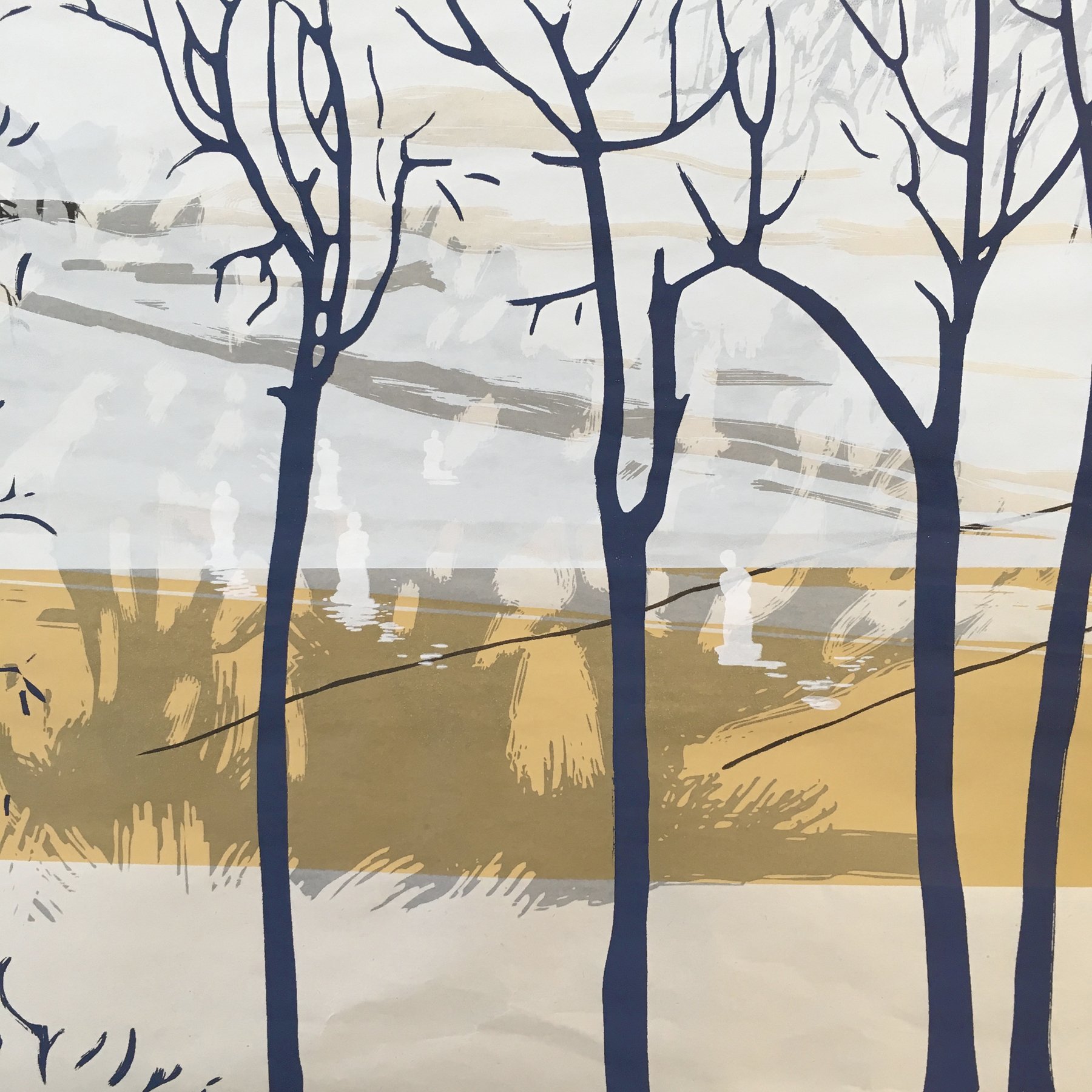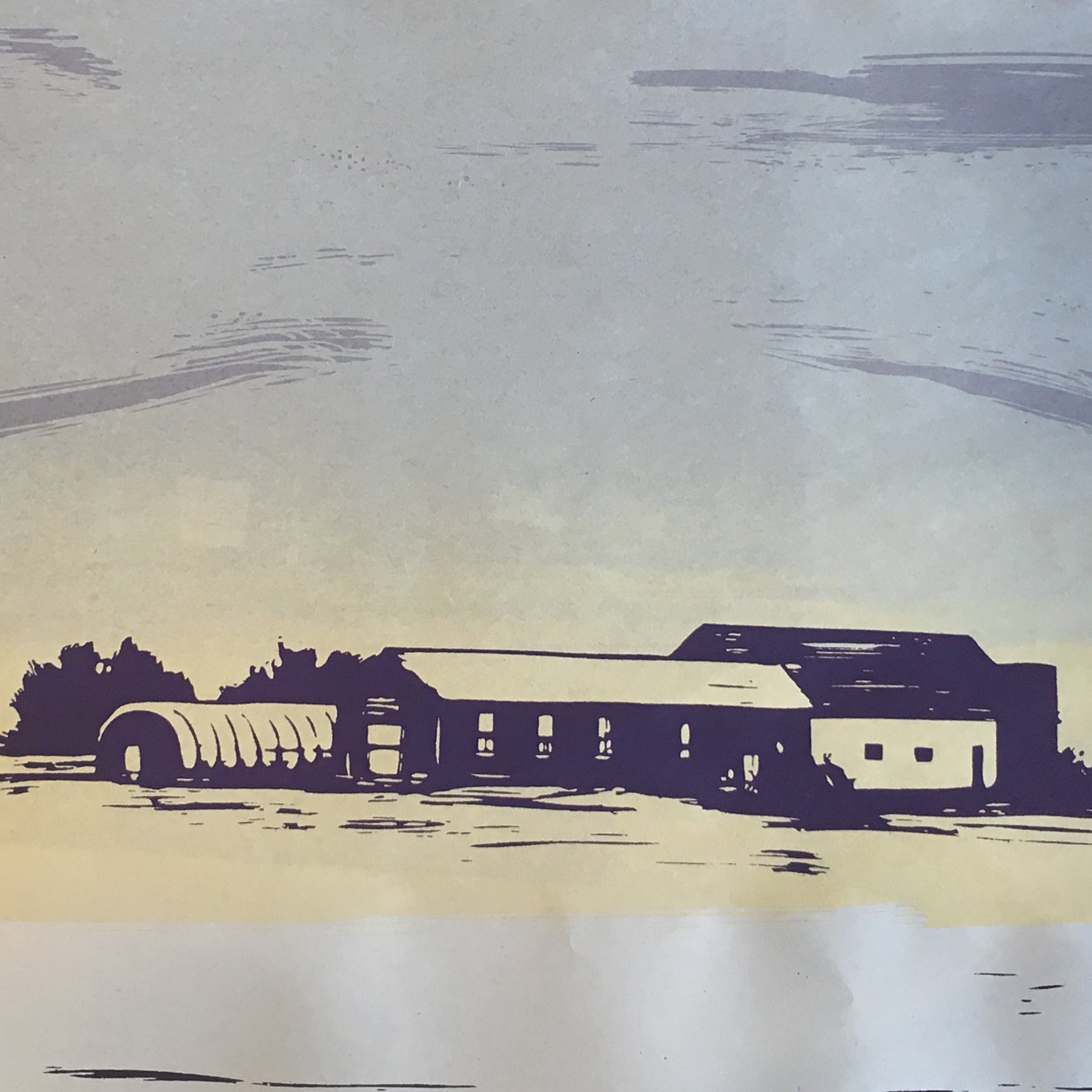The Happy Accidents Between Prints
Allowing new ideas to reveal themselves to you within your creative process
Most of my work is currently done either in painting or screenprinting. Unlike painting which can be very free-form, screenprints are composed of individual colour layers. Each layer is printed and allowed to dry before the next is printed on top. Whenever you begin to print a new colour layer or run into a problem with your print (unwanted texture, a blockage, etc.), you print a copy on cheap newsprint paper.
I have a stack of newsprint sheets that I use until they become too covered with ink to be useful. Because they are used for weeks or months at a time, layers and images from different projects can end up printed together. This creates many happy accidents that often give me new ideas for colour or texture combinations, or how I might use existing drawings in new ways.
It would be so easy to not even notice these test prints and to simply look at the information you need at that moment and move on. Instead, I have begun to set aside (or snap a photo of) any interesting ones for later. They’ve become almost like a screenprinting sketchbook of sorts, and I definitely think they will result in new work.
New colour combinations
I remember the first time I started noticing the images that were appearing on these test sheets. I was printing a burgundy halftone and it had a dramatically different effect when printed atop different colours:
The colour overlays created some new colour ideas (left three images). In the final image (far right), the rain from my Summer Rain print atop part of my Montreal house at night made almost a complete rainy day scene.
Colours and textures from various prints in my Between Cities series
Interesting textures
I love the yellows from my Roadside Fog scene against these navy trees of my Flooded Gardens print. The textures happening on top of the yellow are pretty interesting, too.
Dusk farm in only three layers instead of nine
New print ideas
This image is just a few of the layers from my Dusk Farm scene. I found the line drawing of the farm so striking against this pure gradient background, it may inspire a smaller-sized print.
Elements from Flooded Gardens and Dusk Farm printed on top of each other
An unexpected scene
This looks like a full scene, but it’s actually parts of the sky from Dusk Farm and the greenery and trees from Flooded Gardens. It reminds me of summertime at the cottage.
A simple winter scene
I often create my images digitally as well as by hand, and sometimes interesting things happen when you turn layers on and off in Photoshop….
This simple winter scene appeared while most of the image’s layers were turned off. Suddenly, this scene went from a wet and green springtime (in Flooded Gardens) to a beautifully simple winter one. It may even appear as a holiday card!
My Flooded Gardens piece in Photoshop with only three of the eleven layers turned on
A whole new set of prints
I was planning to make a print with just one sky gradient and was deciding which variation I wanted when I accidentally made the sky layer dark (in Photoshop).
The accidental night scene:
I accidentally made the sky a dark colour in Photoshop and was struck by the scene before me
Seeing the faint tree silhouettes against a dark sky sparked the idea of creating a series showing dusk falling on the park. Until then, I hadn’t even been thinking of a night scene – and had never thought to put a lighter transparent colour on top of a dark one!
The first print, below, was based on a sketch I made after a walk through the park by our house in mid-winter.
The full set of finished screenprints showing dusk falling on a winter park...
The full set of screenprints showing a wintery dusk falling
The benefits of slowing down
I found this experience of happy accidents to be a good reminder of the benefits that can come when you slow down, just a little, while you are working. (It feels almost as though the universe simply handed me a bunch of new ideas!) I encourage you to take the extra time to be present in the process and notice things that come up at various steps – whether on your mixing palette, in a failed piece of work, or on test prints, like this.
I hope this post got you thinking about where in your own work you might find your own happy accidents. Happy creating!
Most of the happy accidents in this post happened while printing my Between Cities series – you can see the actual artworks there.
For more behind-the-scenes, you can sign up for my monthly email letter at the bottom of the homepage, or join me over on Instagram.
If you struggle sometimes with showing up and doing the work, I wrote a post about how to get out of your own way and start creating.
Pin this article for later:









